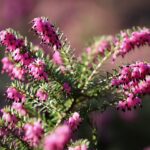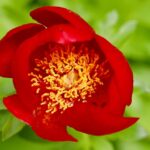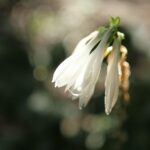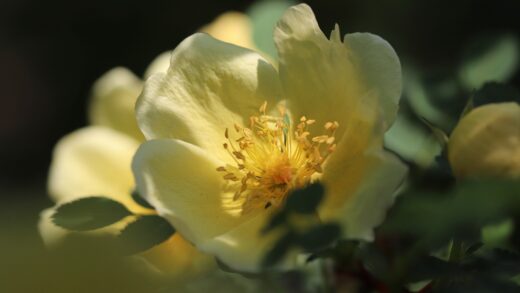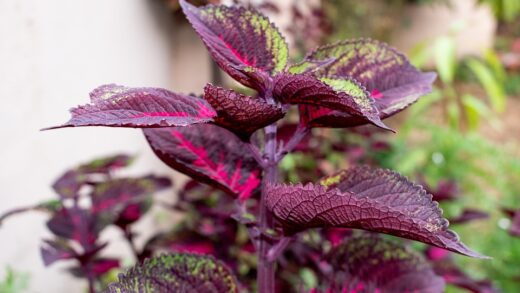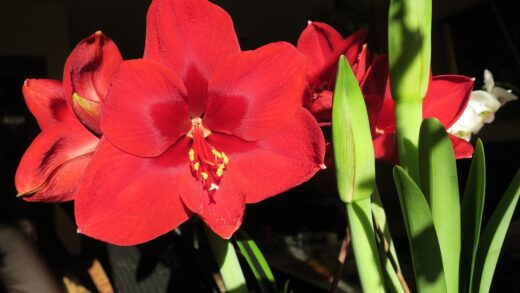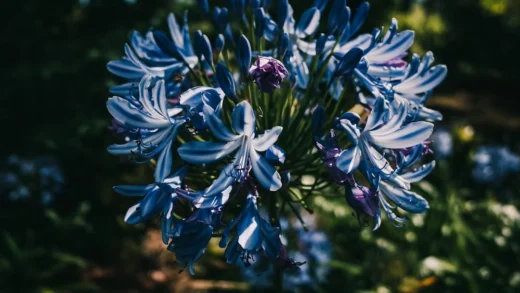The light requirements of Erica carnea are straightforward and non-negotiable for achieving a truly healthy and floriferous plant: it demands full sun. This preference is a direct reflection of its native habitat on the open, treeless slopes of the Alps, where it is exposed to high levels of solar radiation. In a garden setting, providing at least six hours of direct, unfiltered sunlight per day is the most critical factor for success, influencing everything from the density of its growth to the sheer volume of its winter blooms. While the plant may survive in conditions of partial shade, its performance will be a pale imitation of its potential. Understanding and respecting this fundamental need for light is the first and most important step in cultivating a stunning and vibrant alpine heath.
The direct impact of sunlight on the flowering of alpine heath cannot be overstated. The plant sets its flower buds for the winter and spring display during the preceding summer and autumn. The energy required for this process is generated through photosynthesis, which is maximized in high-light conditions. A plant situated in full sun will produce a profusion of flower buds, resulting in a dense carpet of color during its blooming season. In contrast, a plant grown in lower light levels will produce significantly fewer flowers, and the display will be sparse and underwhelming.
Sunlight also plays a crucial role in the plant’s morphology, or physical structure. In a sunny location, Erica carnea develops into a dense, compact, and resilient mound. The stems are strong, and the foliage is thick, creating the desirable cushion-like appearance for which it is known. When deprived of adequate light, the plant will exhibit a behavior known as etiolation. It will stretch its stems in an attempt to reach for more light, resulting in a leggy, open, and weak structure. This not only detracts from its aesthetic appeal but also makes the plant more susceptible to damage from wind, snow, and pests.
Furthermore, many cultivars of alpine heath have been selected for their vibrant foliage colors, which can range from bright green and gold to deep bronze and orange, often changing throughout the seasons. These rich colors are only fully expressed when the plant receives ample sunlight. In a shady spot, the foliage of a golden or bronze cultivar will often revert to a plain green, losing the very characteristic that makes it a standout variety. Therefore, to appreciate the full spectrum of beauty these plants offer, from flowers to foliage, a sun-drenched location is essential.
The critical role of sunlight for alpine heath
Sunlight is the primary energy source for all plants, and for a high-performance species like alpine heath, its role is absolutely critical. Photosynthesis, the process by which plants convert light energy into chemical energy in the form of sugars, fuels all of their metabolic functions. For Erica carnea, this includes not only basic survival and foliage growth but also the energetically expensive processes of producing thousands of flowers during the cold winter months and withstanding environmental stresses like cold and drought. Insufficient light leads to an energy deficit, resulting in a plant that is merely surviving rather than thriving.
The intensity and duration of sunlight directly influence the plant’s hormonal balance and growth patterns. High light levels promote the production of hormones that encourage branching and compact growth, leading to a dense, mounding habit. In low light, the plant’s hormonal response shifts to prioritize stem elongation as it seeks out a brighter location. This is why plants in the shade become tall and lanky, with large gaps between the leaves and branches. This weak structure is not just unattractive; it is also less able to support the weight of flowers or snow.
Sunlight also has a direct effect on soil and plant health by creating a drier microclimate. A sunny location allows the morning dew and moisture from rain to evaporate quickly from the plant’s foliage and the soil surface. This reduces the amount of time that fungal spores have to germinate and infect the plant, significantly lowering the risk of diseases like powdery mildew and botrytis. In the shade, where the air is more still and surfaces stay damp for longer, the risk of these fungal problems is much higher, compounding the stress already placed on the plant by the lack of light.
Ultimately, providing full sun is about meeting the plant’s fundamental, genetically programmed needs. Attempting to grow alpine heath in a shady corner of the garden is working against the plant’s basic biology. While it may cling to life for a time, it will never perform as intended and will be in a constant state of stress, making it more vulnerable to a host of secondary problems. To truly succeed with this plant, one must respect its alpine origins and provide it with the sun-drenched conditions it craves.
Optimal sun exposure for flowering and health
To achieve the best possible performance from alpine heath, the target for sun exposure should be a minimum of six to eight hours of direct sunlight each day during the growing season. An ideal location would be an open, south-facing or west-facing slope or bed that receives unobstructed sun for the majority of the day. This level of exposure provides the plant with the maximum amount of energy to fuel its growth, develop a robust structure, and, most importantly, form an abundance of flower buds for its winter and spring spectacle.
Morning sun is particularly beneficial. It helps to quickly dry any dew from the foliage, which is a key factor in preventing the development of fungal diseases. A location that receives sun from the early morning through the afternoon is perfect. While Erica carnea is a sun-lover, in extremely hot climates (e.g., USDA zones 7b and above), some protection from the most intense, late afternoon sun can be beneficial. In these regions, a spot that receives morning sun and very light, dappled shade during the hottest part of the afternoon can help reduce heat and water stress without significantly compromising flowering.
It is also important to consider the seasonal changes in sun exposure. A location that is sunny in the summer may become shaded in the winter as the sun takes a lower path across the sky. Since alpine heath is actively growing and flowering during the winter and early spring, winter sun exposure is also valuable. Before planting, observe the proposed site during different seasons to get a true picture of the year-round light conditions. The presence of deciduous trees nearby can create a perfect scenario, providing some light shade in the summer but allowing full sun to reach the plants during their winter flowering season.
When planting in groups, ensure that individual plants are not eventually shaded out by their neighbors. Follow the recommended spacing guidelines for the specific cultivars you are growing. Also, consider the mature height of other plants in the same bed. Do not place low-growing alpine heath where it will be overshadowed by taller perennials or shrubs. Giving it a position at the front of the border or in a dedicated rockery ensures it will continue to receive the light it needs as the rest of the garden matures around it.
The effects of insufficient light
The consequences of planting alpine heath in a location with insufficient light are predictable and multifaceted. The most immediately noticeable effect will be on flowering. A plant in partial or full shade will produce very few, if any, flowers. The plant simply does not have the energy reserves to engage in reproduction, and instead must allocate all its limited resources to basic survival and stretching its stems towards any available light source. This completely negates one of the primary reasons for growing this species.
The plant’s form and structure will also deteriorate significantly in low light. Instead of a dense, neat mound, you will get a sparse, open plant with long, weak stems and few leaves. This leggy growth is not only aesthetically unpleasing but also structurally unsound. The stems will be unable to support themselves, leading to a floppy, flattened appearance. This open structure also fails to provide the effective weed suppression that a dense mat of heath can offer, allowing weeds to grow up through the center of the plant.
Foliage color will also suffer. The vibrant golds, oranges, and bronzes of many popular cultivars are a direct response to sunlight. In the shade, these colors will fade to a muted, often dull green. The plant is essentially trying to maximize its photosynthetic capacity by producing more chlorophyll, which masks the other pigments. The result is the loss of the year-round color interest that makes these varieties so valuable in the garden.
Furthermore, a plant weakened by a lack of light is far more susceptible to a range of secondary problems. The damp, stagnant conditions often found in shade create a perfect breeding ground for fungal diseases. The plant’s weakened state also makes it a more attractive target for pests. Over time, an alpine heath grown in the shade will enter a spiral of decline, becoming progressively weaker, less attractive, and more prone to disease until it eventually succumbs.
Balancing sun and shade in various climates
While the rule of “full sun” is a reliable guideline, the optimal amount of sun can be subtly influenced by your specific climate. The intensity of the sun varies greatly with latitude and altitude. In cooler, more northerly climates, such as the UK, the Pacific Northwest, or New England, providing the absolute maximum amount of sun possible is almost always the best strategy. In these regions, the sun is less intense, and the risk of scorching or heat stress is minimal. An open, south-facing position is ideal and will yield the best results.
In contrast, in hotter and more southerly climates, such as the southern United States or Mediterranean regions, the summer sun can be incredibly intense. In these conditions, while a minimum of six hours of sun is still required, some light shade during the hottest part of the afternoon can be beneficial. This can prevent the foliage from scorching and reduce water stress on the plant. A location that provides full morning sun and then dappled or filtered light from 3 PM onwards can be a good compromise, providing enough energy for flowering without subjecting the plant to excessive heat stress.
The type of shade is also an important consideration. The deep, dark shade cast by a dense evergreen tree or the north side of a building is unsuitable for alpine heath in any climate. However, the light, dappled shade cast by high-limbed deciduous trees can be acceptable, especially in hotter regions. This type of shade moves throughout the day, so the plant is not in constant shadow, and it provides full sun during the winter and spring when the trees are bare, which coincides with the heath’s flowering season.
Ultimately, gardeners must adapt the “full sun” guideline to their local conditions. This involves observing your garden and understanding the intensity and duration of the sunlight it receives. The health of the plant is the best indicator. If a plant in a hot climate looks consistently wilted or scorched despite adequate water, it may be receiving too much intense sun. If a plant in a cool climate is leggy and fails to bloom, it is almost certainly not receiving enough. Adjusting the placement based on these observations is key to finding the perfect balance for your specific environment.


